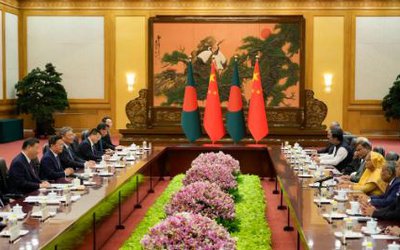
Thukten Zangpo
If the national debt is divided among the population, every Bhutanese would have to chip in Nu 315, 288, which amounts to an annual salary of an officer-level civil servant earning a monthly salary of Nu 26,274.Link
The total national debt as of June end this year is Nu 238.398 billion (B), according to the annual audit report 2020-21 released on November 11. This is 129.06 percent of the gross domestic product (GDP). Bhutan’s GDP was recorded at Nu 184. 715B.
The report found that the total debt has increased over the successive Five-Year Plans (FYPs) from Nu 33.070B at the end of 9th FYP to Nu 101.310B in 10th FYP and Nu 185.312B in 11th FYP. In fiscal year (FY) 2007-08, the debt to GDP ratio was 64 percent.
However, a major portion of the debt is related to borrowings for hydropower amounting to Nu 162.359B accounting for 73.40 percent of the total external debt in FY 2020-21.
External debt of Nu 221.324B constituted 92.84 percent of the total debt. It included borrowings from India on account of Standby Credit Facilities of Nu 7B, Nu 48.274B for Punatshangchhu-I, Nu 50.632B for Punatshangchhu-II, Mangdechhu, Nu 45.952B, and Nikachhu (Tangsibji) Nu 3.145B.
Even with huge borrowings in the hydro sector, the hydro-debt to total debt ratio declined to 68.10 percent in FY 2020-21 from 77.12 percent FY 2018-19.
Non-hydro-debt, meanwhile, increased to 31.89 percent in FY 2020-2021 from 23 percent in FY 2018-19.
Moreover, the Royal Audit Authority (RAA) found out that the debt to GDP ratio has been increasing for the past three years.
The report stated that the total public debt had increased by Nu 31.195B (16.94 percent) at the end of the fiscal year (FY) 2019-20 and by Nu 23.029B (10.69 percent) at the end of FY 2020-21 compared to the previous year.
The increase in the debt was accredited to the constant increase in the government’s fiscal deficit over the years due to limited revenue growth and increased public spending, the report added.
“Fiscal deficit increased from Nu 545 million (M) in the FY 2017-18 to Nu 11.139B in FY 2020-21.”
The country’s internal revenue at Nu 35.855B was enough to meet the current expenditure in the fiscal year 2020-21. However, current expenditure amounted to 88.94 percent of the internal revenue or Nu 31. 889B.
Internal or domestic debt made up 7.16 percent of the total external debt amounting to Nu 17.074B.
The government borrowed Nu 13.170M from the National Pension and Provident Fund (NPPF), Nu 361.267M as NPPF loan to Bhutan Hydropower Services Limited, Nu 3.7B as bond borrowing, and Nu 13B for treasury bills.
The RAA recommended ensuring a more realistic revenue forecast and reviewing and taking appropriate corrective measures to control increases in recurrent expenditure.
It added that the high proportion of internal revenue being consumed by recurrent expenditure inevitably showed the syndrome of dependency on grant borrowing.
“The grant being donor-driven and outside the government control and not certain both in terms of timing and cash flows, a judicious fiscal policy is imperative,” it stated.
The report further recommended that the risk of borrowing is associated with huge public debt which has a long-term negative impact on economic sustainability.
The principal repayment of loans during FY 2020-21 amounted to Nu 3.737B consisting of Nu 12.269M for internal borrowings and Nu 3.725B for external borrowings.
Source: Kuensel
- Myanmar Government says quake death toll tops 2,700, could rise further
- Apr 02, 2025
- Trump To Reveal Reciprocal Tariffs On Wednesday
- Apr 02, 2025
- UN migration agency calls for support for quake-hit Myanmar
- Apr 01, 2025
- KMC Imposes Rs 793,000 Fine On Former King Shah
- Mar 30, 2025
- US proposed new mineral rights deal: Zelenskyy
- Mar 30, 2025














